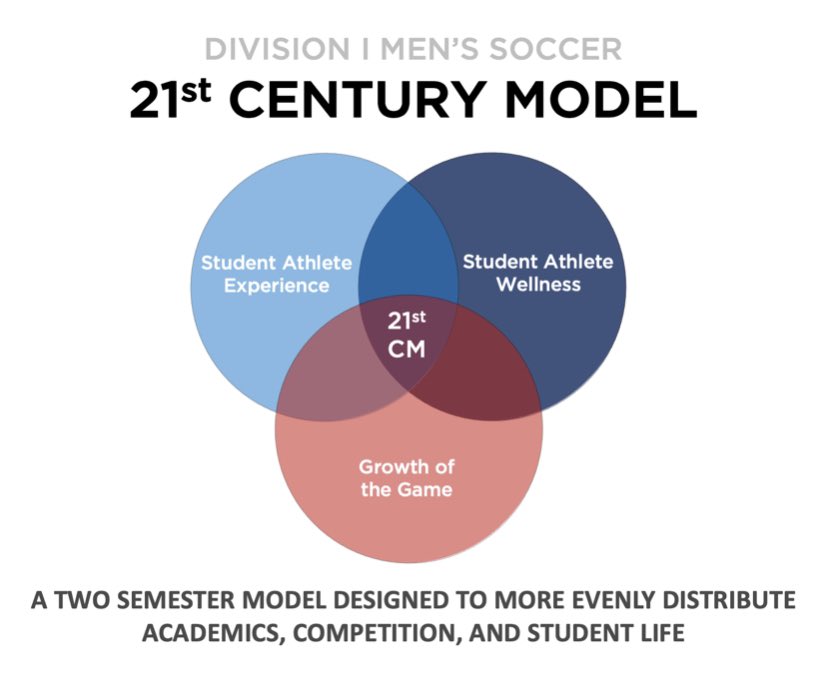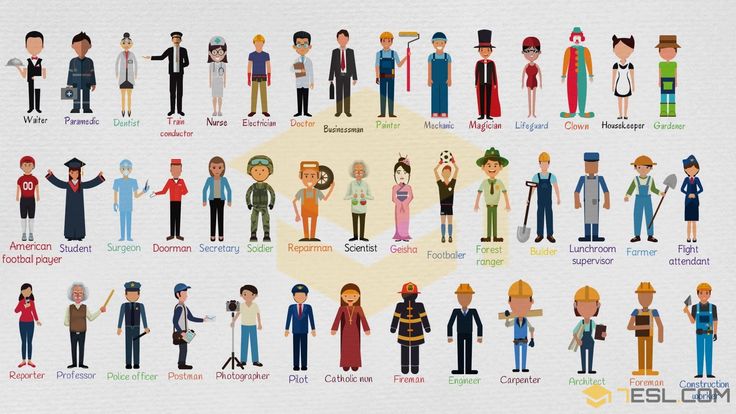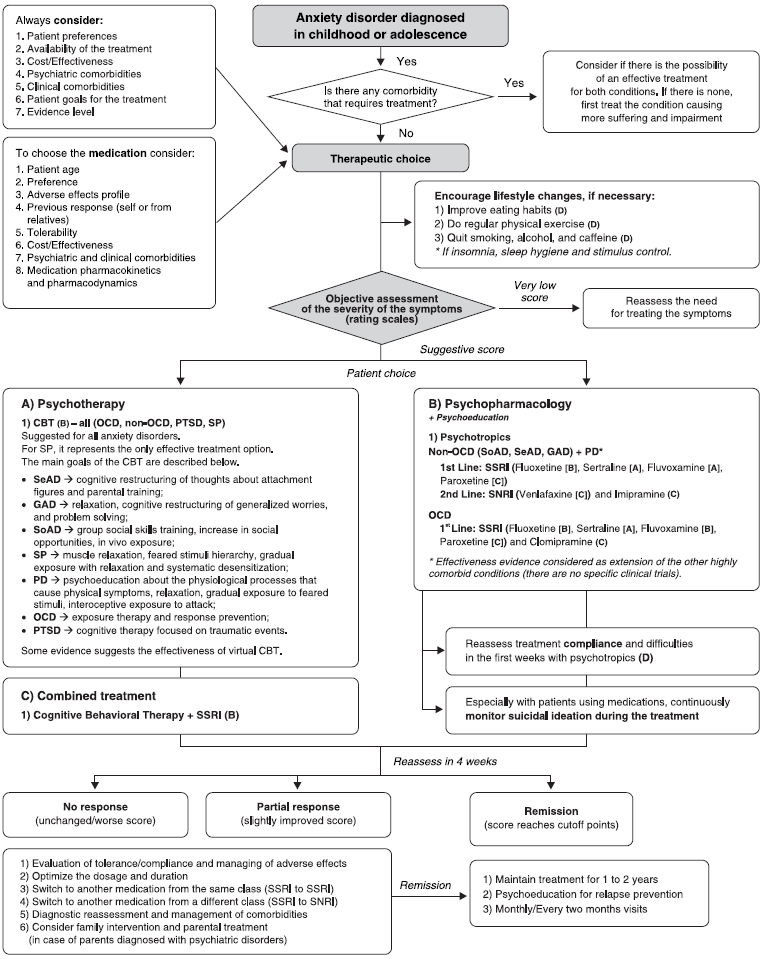What does a bpd episode look like
Borderline Personality Disorder: What You Need To Know
Borderline personality disorder (BPD) is a complex condition. It affects how a person feels about themselves and others. BPD is characterized by intense, unstable emotions and relationships as well as insecurity and self-doubt.
BPD makes everything about a person feel unstable, ranging from moods, thinking, behavior, relationships, and sometimes identity. People with this condition have described BPD as the feeling of having an exposed nerve ending, essentially leaving someone to be easily triggered by small things.
But there are effective treatments for it.
Keep Reading To Learn
- The truth about borderline personality disorder
- How to recognize BPD in yourself and other people
- How borderline personality disorder is diagnosed and treated
- Common myths and misconceptions about BPD
Understanding the Rollercoaster of BPD
People with borderline personality disorder often feel a huge amount of emotional instability. It impacts a person’s self-image, likes and dislikes, and goals. This often makes them confused about their sense of self. The condition makes it difficult for a person to be comfortable in their skin.
Many people with BPD act impulsively, have intense emotions, and experience dissociation and paranoia when most distressed. This emotional volatility can cause relationship turmoil. Also, the inability to self-soothe can lead to impulsive, reckless behavior.
1.4% of American adults experience BPD
People with BPD are often on edge. They have high distress and anger levels, so they may be easily offended. They struggle with beliefs and thoughts about themselves and others, which can cause distress in many areas of their lives.
People living with BPD often have an intense fear of instability and abandonment. As a result, they have problems being alone.
The condition is also known for anger, mood swings, and impulsiveness. These qualities can dissuade people from being around someone with BPD. On top of this, many people with the condition struggle with self-awareness and how others perceive them. This makes them extremely sensitive.
On top of this, many people with the condition struggle with self-awareness and how others perceive them. This makes them extremely sensitive.
BPD is a mind and body condition. Its symptoms begin to manifest during the early teenage years and gradually improve during adult life.
Watch Now!
Dr. Lois Choi-Kain helps us understand borderline personality disorder
What Causes Borderline Personality Disorder?
BPD may be caused by genetics, brain abnormalities, and/or environmental factors. Due to the wide variety of suspected risk factors, it’s hard to determine who will develop it.
Environmental Factors
Early childhood adversity, such as child abuse or neglect, may be a cause.
Genetics
Research suggests that it may be an inherited genetic condition or linked with other mental disorders among other family members.
Brain Abnormalities
Certain brain differences are thought to be contributing causes of the disorder. When certain brain chemicals responsible for mood regulation don’t function properly, there are changes in some areas of the brain. This has been linked to aggression, difficulty regulating destructive urges, and depression.
BPD Doesn’t Often Occur Alone
Effective treatment involves addressing related disorders.
Many people diagnosed with borderline personality disorder experience other conditions, including:
- Depression
- Anxiety disorders
- Eating disorders
- Post-traumatic stress disorder (PTSD)
- Bipolar disorder
- Substance use disorder
There Are Many Misconceptions
This disorder is misunderstood by many, including some mental health practitioners.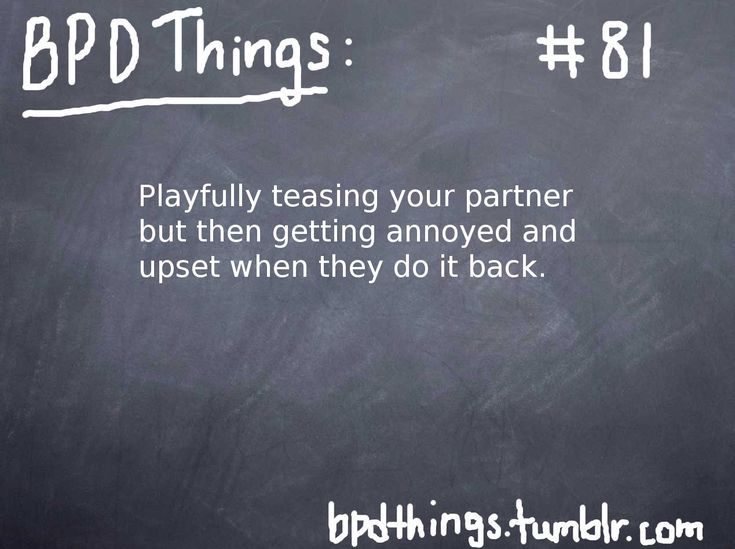 This confusion can impact and influence the way that people are treated. Even worse, long-standing myths can discourage people from seeking help for the condition, especially if they feel their experience is being misunderstood.
This confusion can impact and influence the way that people are treated. Even worse, long-standing myths can discourage people from seeking help for the condition, especially if they feel their experience is being misunderstood.
Some common myths and misconceptions are:
Myth: It’s Not Treatable
Borderline personality disorder is very treatable. In the past, since BPD affects someone’s personality, many were quick to conclude that it was untreatable because someone’s personality cannot be changed.
More recently, many therapies have been proven effective as treatments, including dialectical behavior therapy (DBT), mentalization-based treatment (MBT), and transference-focused psychotherapy (TFP). Now, a growing number of less intensive, generalist approaches, like general psychiatric management (GPM), are also being practiced around the world.
A BPD diagnosis doesn’t mean that someone will live with symptoms forever. With treatment, the symptoms ebb and flow. Many people with the condition can have high-functioning lives.
Many people with the condition can have high-functioning lives.
Myth: People With BPD Are Victims of Child Abuse
This is not always the case.
While some cases of borderline personality disorder stem from childhood trauma, a diagnosis is more likely to be the result of a combination of environmental factors. These can include attachment, childhood trauma, biological factors, and social factors.
Myth: It Affects Only Women
It’s estimated that over 14 million Americans have BPD. Once more commonly diagnosed in women, the largest study done on psychiatric disorders shows that it occurs equally often in women and men.
One explanation behind it appearing to affect more women is that women are more likely to seek mental health care than men. Since research on BPD is often conducted in a psychiatric setting, it was previously less likely for men with borderline personality disorder to be included in these research efforts.
Another explanation is that BPD is often misdiagnosed in men.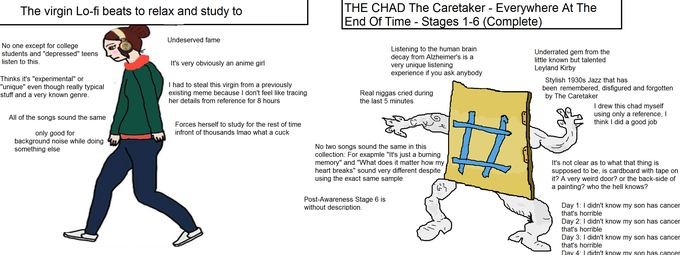 Many men with the condition are often diagnosed with depression or PTSD.
Many men with the condition are often diagnosed with depression or PTSD.
Meg’s Journey With BPD
Meg is a participant in McLean’s Deconstructing Stigma campaign, and she struggles with BPD.
Read more about Meg’s mental health story and her message of hope for those who are also struggling.
Meg’s Story
Recognizing Borderline Personality Disorder in Yourself—or Others
People with borderline personality disorder struggle with self-regulation. Self-regulation is the ability to manage emotions, thoughts, and behaviors in ways that have positive outcomes, like self-esteem and good relationships.
To be officially diagnosed, a person has to exhibit five or more related symptoms. These symptoms have to be ongoing and impact various aspects of life.
There are a handful of medically recognized symptoms of borderline personality disorder.
Instability in Relationships
Intense and short-lived relationships are common for people with BPD. It’s very common for someone with this disorder to have intense, unstable relationships filled with drastic and quick-changing feelings.
A person with BPD may fall in love quickly and assume that the other person will make them happy. Typically, this results in the person feeling hurt and disappointed and can further intensify emotional swings. People with this condition may have either perfect or horrible relationships, with rapid changes in perception resulting from anger, hate, and devaluation.
Extreme Emotional Swings
Someone with this condition often experiences unstable moods and emotions. The little things that don’t mean much to others—like someone not holding the door open for you or meeting a new friend—can be either very exciting or frustrating.
Many with this condition can be happy one moment and extremely sad or disappointed the next. Their moods are also very intense and unpredictable in timing. They can last anywhere from a few minutes to a few hours or longer.
Their moods are also very intense and unpredictable in timing. They can last anywhere from a few minutes to a few hours or longer.
Explosive Feelings of Anger
Many people with BPD struggle with intense anger and a short temper. This makes it difficult for them to feel in control of their emotions once they have been provoked. They can quickly fill with rage, though this anger may not always be outwardly directed and can result in self-harm. Sometimes the person might be angry at themselves and not at anyone or anything else.
Self-Harm
Self-harm is risky behavior that may make the person feel good at the moment of distress. Many people with BPD often engage in self-harming activities, think about suicide, and make suicidal gestures and threats.
Many people with borderline personality disorder engage in sensation-seeking behavior that could be harmful, especially when they are angry.
Risky or deliberate self-harm activities may include:
- Engaging in dangerous and unhealthy binge drinking
- Cutting or other self-injury
- Going on shopping and spending sprees
- Regularly engaging in unsafe sex
- Using drugs
Not all self-harm is intended to end in death. It’s important to remember that it’s often used as a way to feel better in a grim moment. However, if it goes untreated, these risky behaviors can end in suicide.
It’s important to remember that it’s often used as a way to feel better in a grim moment. However, if it goes untreated, these risky behaviors can end in suicide.
McLean’s Michael Hollander, PhD, an expert in self-harm in adolescents, helps us understand more about teen cutting and self-injury.
Lingering Feelings of Emptiness or Worthlessness
A lot of people with the condition struggle with emptiness or worthlessness. Many with BPD report feeling like there is a void inside of them or like they don’t matter. As a result, they often turn to sex, drugs, or food to try to feel satisfied.
Feeling Out of Touch With Reality
Many diagnosed with BPD feel suspicious about events in their lives. They struggle with feelings of suspicion and paranoia about the intentions of people around them. When they are stressed, they may lose touch with reality and become disassociated. Disassociation feels like being spaced out, foggy, or as if you exist outside of your own body.
BPD can be confused with other forms of mental illness, so a diagnosis is important. If you or someone close to you often has feelings of emptiness, loneliness, or insecurity that cause irrationality or impulsivity, it’s important to talk to your health care provider.
Have You Been Watching?
Mental Health Webinars
McLean develops free and reliable mental health resources for the public and professionals to promote healthy individuals and communities.
Sign Up Now!
When Is It Time To See a Professional?
If you are experiencing any of the previously mentioned signs and symptoms associated with borderline personality disorder, please consult a mental health professional. This condition is common and treatable.
You should see a doctor any time your symptoms are triggered. If you are unsure of your triggers, try to think of a time in the past when you experienced raging and intense emotions, acted impulsively, or had a desire to harm yourself. The events before this emotion are likely your triggers.
The events before this emotion are likely your triggers.
Many who have BPD experience suicidal thoughts. These can include but aren’t limited to mental images and fantasies about self-harm and plotting suicide. If you are experiencing suicidal thoughts and may harm yourself or someone else, call 911 immediately or visit your nearest emergency room.
Understanding and Recognizing Symptoms
People with BPD are sensitive to stress, so stressful situations activate symptoms related to the condition. The stressors that promote BPD’s most volatile symptoms can be external or internal, and they often vary from one person to another. There are both interpersonal and mental triggers of borderline personality disorder, many of which are unique to the individual.
Managing these symptoms, either for yourself or your partner, starts by understanding emotions, thoughts, and memories that set off symptoms. Then you can better manage addressing the symptoms if a stressor is unavoidable. You should work with a mental health professional to learn physical and mental exercises to understand triggers and develop skills to successfully manage them.
You should work with a mental health professional to learn physical and mental exercises to understand triggers and develop skills to successfully manage them.
Interpersonal Relationship Events
Separations, disagreements, and rejections—real or perceived—are the most common triggers for symptoms. A person with BPD is highly sensitive to abandonment and being alone, which brings about intense feelings of anger, fear, suicidal thoughts and self-harm, and very impulsive decisions.
When something happens in a relationship that makes them feel abandoned, criticized, or rejected, their symptoms are expressed. People with borderline personality disorder experience rejection sensitivity, which makes relationships very intense and dependent. Events that can worsen this can be losing a job, ending a relationship, or experiencing rejection of any type.
Identifying Episodes
To better manage triggers, it is crucial to understand episodes. These episodes are highly dependent on the situation at hand and the specific individual, but there are common red flags for recognizing an episode.
Things that can indicate an episode is occurring:
- Intense angry outbursts
- Suicidal thoughts and self-harm behavior
- Going to great lengths to feel something, then becoming increasingly avoidant and withdrawn
- Paranoia, feeling as if there is someone out to get you
These episodes can also involve extreme feelings of positivity and euphoria. People with this condition can be very impulsive. It’s important to note these emotional highs as signs of an episode because they may be involved in risky behavior as well.
Understanding BPD in Teens
The difference between typical teen behaviors and emerging personality disorders can be hard to recognize. How can you tell which is which?
Read the Article
Treating Borderline Personality Disorder
Treatment involves breaking down the dysfunctional patterns of the brain’s thinking, feeling, and behavior that cause distress to maintain a better emotional balance. Sometimes health care providers may suggest medication as part of a care plan.
Sometimes health care providers may suggest medication as part of a care plan.
The treatment options often used are general psychiatric management (GPM), dialectical behavior therapy (DBT), mentalization-based treatment (MBT), and transference-focused psychotherapy (TFP).
General Psychiatric Management
Sometimes referred to as good psychiatric management, GPM is designed to provide “good enough” treatment to most patients. This treatment is not inferior to others. Studies have shown that GPM can be as effective as DBT in treating patients.
GPM combines the essential ingredients of other treatments to provide care to the patient, even when specialized or more resource-intensive treatments are not available.
Learn more about general psychiatric management
Dialectical Behavior Therapy
DBT is known as the gold standard BPD treatment. It emphasizes the development of four skill sets: mindfulness, interpersonal effectiveness, emotion regulation, and distress tolerance. DBT teaches patients to control their intense emotions and minimize their destructive patterns.
DBT teaches patients to control their intense emotions and minimize their destructive patterns.
Through DBT, patients can also learn how to build interpersonal skills and develop self-awareness.
DBT has been clinically tested, proven to be effective in borderline personality disorder and depression treatment in adolescents and adults, and is used extensively at McLean Hospital.
Learn more about dialectical behavior therapy
Watch Now!
Dr. Lois Choi-Kain talks about treating BPD
Mentalization-Based Treatment
MBT aims to help patients by improving interpersonal and relationship skills while reducing self-destructive behaviors. Mentalizing focuses on the ability to differentiate and concentrate on your emotional state of mind and separate your own thoughts and feelings from those around you.
Mentalizing focuses on the ability to differentiate and concentrate on your emotional state of mind and separate your own thoughts and feelings from those around you.
Since individuals with BPD can find it difficult to recognize the impacts of their behaviors, MBT encourages focusing and reflecting on mental states to better understand how mental state affects behavior in ourselves and others.
Learn more about mentalization-based treatment
Transference-Focused Psychotherapy
TFP focuses on the patient’s sense of identity and aims to create more stable and realistic experiences of both self and others. With BPD, one’s sense of identity may feel contradicted. TFP focuses on addressing identity-based problems with interpersonal relationships, self-esteem, and mood.
By helping patients learn to verbalize what they are feeling—versus acting impulsively on emotions—TFP helps with increased functioning and satisfaction in interpersonal relationships.
In addition to these therapies, group and individual therapy may be useful as well. Group and individual therapies cover a broad range of topics and are not necessarily sessions dedicated to BPD. Group and individual therapy can be beneficial for addressing mindfulness, interpersonal relationships, stress management, emotion regulation, and family relationships.
Group and individual therapies cover a broad range of topics and are not necessarily sessions dedicated to BPD. Group and individual therapy can be beneficial for addressing mindfulness, interpersonal relationships, stress management, emotion regulation, and family relationships.
Learn more about transference-focused psychotherapy
How Is Borderline Personality Disorder Diagnosed?
Borderline personality disorder is a complex condition that doesn’t present itself the same way in every person.
Some mental and psychological disorders have similar symptoms, so it’s vital to see a licensed mental health professional for an assessment and the right diagnosis.
To diagnose, your provider may go through the following:
- A detailed interview with your doctor, a mental health provider, or both
- A psychological evaluation
- Medical history and/or a medical exam
- Discussing signs and symptoms, including criteria in the hallmark signs of BPD
Most diagnoses are in patients 18 and older. BPD can, however, be diagnosed in younger patients.
BPD can, however, be diagnosed in younger patients.
If you are experiencing the mentioned signs and symptoms associated with borderline personality disorder, please consult a mental health professional.
People with this condition often experience suicidal thoughts, such as mental images and fantasies about self-harm and plotting suicide. You should contact a suicide hotline number, a close loved one, or a mental health provider to get help.
Suicide prevention resources can be found below.
Good News: There’s Hope for Folks With BPD!
Because borderline personality disorder is as unique as each person who lives with it, treatment requires a specialized approach.
Many people have BPD and, at times, experience emotional anguish from the condition. However, you don’t have to resort to living a life that’s full of pain and heartbreak. It’s important to take care of yourself, recognize your triggers, and work with your health care team to determine what treatments will help keep it in check.
By committing to care and learning as much as possible about it, you can make a difference in your quality of life—and the lives of those around you.
McLean Is Here to Help
McLean offers world-class care for teens and adults who struggle with borderline personality disorder. Contact us today to find the care that’s right for yourself or your loved one.
877.372.3068877.372.3068
Want More Info?
Looking for even more information about borderline personality disorder? You may find these resources helpful.
Interesting Articles, Videos, and More
Learn more about borderline personality disorder and what you can do if you or a loved one is displaying signs of BPD.
- 4 Myths About Borderline Personality Disorder
- The Impact of COVID-19 on Individuals With Borderline Personality Disorder
- Video: Remaining in Control of Our Emotions
- How Working Improves Your Mental Health
- Video: Courtney Cook Is Living Her Life With BPD
- Podcast: Living a Life of Empathy and Experience
- Find access to all of McLean’s resources on BPD
Helpful Links
These organizations may also have useful information:
Behavioral Tech: Training for Mental Health Professionals
Behavioral Tech provides robust training for clinicians, especially in dialectical behavior therapy and other treatments for borderline personality disorder. Behavioral Tech also offers resources for providers and consumers in an effort to bring ever-better treatments to those in need. The organization supports advocacy efforts and BPD research.
Behavioral Tech also offers resources for providers and consumers in an effort to bring ever-better treatments to those in need. The organization supports advocacy efforts and BPD research.
Borderline Personality Disorder Resource Center
The mission of the Borderline Personality Disorder Resource Center (BPDRC) is to promote BPD education and connect those affected by BPD to established resources for treatment and support. The BPDRC is affiliated with the Personality Disorders Institute at New York-Presbyterian Hospital/Westchester Division, and their efforts are overseen by innovators in the research and treatment of personality disorders. Among many resources, the BPDRC maintains a nationwide database of clinicians, agencies, and facilities that focus on treating BPD and co-occurring disorders.
National Education Alliance for Borderline Personality Disorder
This group provides education, while raising public awareness and understanding, in an attempt to reduce stigma and promote research and enhance the quality of life of those affected by borderline personality disorder. They work with Congress to enhance the quality of life for those individuals affected by this serious but treatable mental illness. NEABPD’s many resources include BPD Family Guidelines, The Family Connections Program, and Family Education Workshop videos.
They work with Congress to enhance the quality of life for those individuals affected by this serious but treatable mental illness. NEABPD’s many resources include BPD Family Guidelines, The Family Connections Program, and Family Education Workshop videos.
New England Personality Disorder Association
NEPDA’s mission is to promote education, support, and advocacy in the field of personality disorders, with a concentration on borderline personality disorder. NEPDA sponsors workshops, conferences, and small group meetings for family members, friends and other loved ones, consumers of mental health services, professionals, and the community at large to improve awareness of personality disorders and reduce the stigma that is often associated with them.
Personality Disorder Awareness Network (PDAN)
A not-for-profit organization dedicated to increasing public awareness of personality disorders, alleviating the impact of personality disorders on families, and preventing the development of personality disorders in children.
Treatment and Research Advances Association for Borderline Personality Disorder
The TARA for Borderline Personality Disorder’s mission is to foster education and research in the field of personality disorders, like borderline personality disorder. They support and encourage educational programs and endeavors targeting mental health professionals, consumers of mental health services, families, and communities to reduce stigma and increase awareness, to disseminate available information on etiology and treatment, and to advocate for accomplishments of these goals.
Suicide Prevention Resources
Although it is not possible to predict suicide with any certainty, our best tool is recognition of the signs that many people exhibit when contemplating suicide. The following three behaviors should prompt you to seek immediate help for yourself or a loved one:
- Talking about wanting to die or to kill oneself
- Looking for a way to kill oneself, such as searching online or obtaining a gun
- Talking about feeling hopeless or having no reason to live
If You or Someone You Know Needs Help
- Call 1.
 800.273.8255 or 988 for the National Suicide Prevention Lifeline
800.273.8255 or 988 for the National Suicide Prevention Lifeline - Text HELLO to 741-741 for free, 24-hour support from the Crisis Text Line
- Outside of the U.S., visit the International Association for Suicide Prevention for a database of resources
- Contact your mental health professional
- Call us at McLean at 617.855.3141 for information on admission
Find more suicide prevention resources.
If you are suicidal or are a danger to yourself or others, please call 9-1-1 or visit your nearest emergency room immediately.
These organizations also offer suicide prevention resources:
Suicide Prevention Lifeline
If you are suicidal, please call 988 or 800.273.TALK (8255). You’ll be connected to a skilled, trained counselor at a crisis center in your area. Counselors are available 24 hours a day, seven days a week. The Suicide Prevention Lifeline website also offers many resources for those looking for support.
American Foundation for Suicide Prevention
The American Foundation for Suicide Prevention (AFSP) is dedicated to saving lives and bringing hope to those affected by suicide. AFSP creates a culture that’s smart about mental health through education and community programs, develops suicide prevention through research and advocacy, and provides support for those affected by suicide. AFSP has local chapters in all 50 states, with programs and events nationwide.
Samaritans: Massachusetts 24-Hour Crisis HelpLine
A non-denominational, not-for-profit volunteer organization dedicated to reducing the incidence of suicide by befriending individuals in crisis and educating the community about effective prevention strategies. The Samaritans provide a free and confidential 24-hour phone befriending line. Call or text the 24/7 statewide Helpline at 877.870.4673.
Stop A Suicide Today!
Stop A Suicide Today is a nationwide campaign by Screening for Mental Health, Inc. , to empower individuals to help themselves, colleagues, friends, and loved ones who are concerned about or feel suicidal.
, to empower individuals to help themselves, colleagues, friends, and loved ones who are concerned about or feel suicidal.
Suicide Prevention Resource Center
The Suicide Prevention Resource Center is the only federally supported resource center devoted to advancing the implementation of the National Strategy for Suicide Prevention.
Books About BPD
Topics
- Borderline Personality Disorder
- DBT
Bipolar Personality Disorder Feelings - Discovery Mood & Anxiety Program
It’s easy for teens and adolescents with borderline personality disorder (BPD) to feel like they are the victims of a very cruel curse. This personality disorder is often characterized by an intense fear of abandonment, unstable relationships and impulsive behavior that ultimately drives people away. “BPD makes me lash out, allowing some of the cruelest things to tumble from my mouth. And believe me, there are only so many times loved ones will forgive a lack of control,” one person writes. Young people that have this disorder describe what it’s like to live with it, in their own words.
“BPD makes me lash out, allowing some of the cruelest things to tumble from my mouth. And believe me, there are only so many times loved ones will forgive a lack of control,” one person writes. Young people that have this disorder describe what it’s like to live with it, in their own words.
What is Borderline Personality Disorder?
A young woman who was diagnosed with borderline personality disorder at the age of 14 shared her story anonymously in Elite Daily. Describing her battle with BPD, she says, “Relationships feel impossible, my brain never stops running and my stress is magnified. I find it very difficult to distinguish who I actually am and who my mental illness wants me to be.”
In a revealing article for VICE magazine, Australian writer Patrick Marlborough offers a personal explanation of BPD: “It is hard to offer a simple medical definition of BPD, but I’ve heard it brilliantly summed up as ‘chronic irrationality.’ Think severe mood swings, impulsivity, instability and a whole lot of explosive anger. ”
”
Borderline Personality Disorder Diagnosis
Because young people with BPD may project symptoms that seem similar to other personality disorders, it is often confused with bipolar, depression, or anxiety disorders. The National Institute of Mental Health offers this description:
“Borderline personality disorder (BPD) is a serious mental disorder marked by a pattern of ongoing instability in moods, behavior, self-image, and functioning. These experiences often result in impulsive actions and unstable relationships. A person with BPD may experience intense episodes of anger, depression, and anxiety that may last from only a few hours to days.”
Borderline Personality Disorder Diagnosis Signs and Symptoms
Teens with BPD may experience extreme mood swings and can display uncertainty about who they are. As a result, their interests and feelings about any recent event can change rapidly.
According to NIMH, symptoms include:
- Frantic efforts to avoid real or imagined abandonment
- A pattern of intense and unstable relationships with family, friends and loved ones, often swinging from extreme closeness and love (idealization) to extreme dislike or anger (devaluation)
- Distorted and unstable self-image or sense of self
- Impulsive and often dangerous behaviors, such as spending sprees, unsafe sex, substance abuse, reckless driving and binge eating
- Recurring suicidal behaviors or threats or self-harming behavior, such as cutting
- Intense and highly changeable moods, with each episode lasting from a few hours to a few days
- Chronic feelings of emptiness
- Inappropriate, intense anger or problems controlling anger
- Stress-related paranoid thoughts
- Severe dissociative symptoms, such as feeling cut off from oneself, observing oneself from outside the body or losing touch with reality
Living with BPD
Ordinary events may trigger these symptoms. For example, adolescents or teens with BPD may feel angry and distressed over minor separations, such as vacations, trips or sudden changes of plans, from people to whom they feel close. Research shows that young people with this disorder may see anger in an emotionally neutral face and have a stronger reaction to words with negative meanings than people who do not have the disorder.
For example, adolescents or teens with BPD may feel angry and distressed over minor separations, such as vacations, trips or sudden changes of plans, from people to whom they feel close. Research shows that young people with this disorder may see anger in an emotionally neutral face and have a stronger reaction to words with negative meanings than people who do not have the disorder.
Marlborough writes, “I think it’s this erratic oscillation that makes BPD so hard to communicate, particularly to those who are close. Because on the surface, it looks like I’m just being ornery. Like all mental illness, it’s best treated with patience and empathy. And unfortunately, like depression or hypomania, it places the onus on people who are not necessarily in a position to help or understand, no matter how much they may care for you. In a relationship, BPD can leave both parties feeling isolated.”
The Dark Side of Borderline Personality Disorder
Just living with someone that has this personality disorder, or being around them, can be extremely difficult, Marlborough admits. “It brings out my mean streak something shocking. I’ve always had a devilish way with words, particularly nasty ones, and BPD is like a Terminator vision that highlights the chinks in everyone’s armour. Unlike my mania, which tends to make me charismatic and eloquent, a BPD ‘turn’ or ‘moment’ sees me turn sour and crude.”
“It brings out my mean streak something shocking. I’ve always had a devilish way with words, particularly nasty ones, and BPD is like a Terminator vision that highlights the chinks in everyone’s armour. Unlike my mania, which tends to make me charismatic and eloquent, a BPD ‘turn’ or ‘moment’ sees me turn sour and crude.”
Relationships & Borderline Personality Disorder
Due to their impulsiveness, young people with BPD tend to change jobs frequently and abruptly cut ties to people they are close to, the young woman with BPD explains in Elite Daily. “We also have intense and sudden mood changes, and we have severe difficulty regulating our emotions. Unintentionally, we tend to blame others when we make a mistake, which causes us to be manipulative and cruel to those we care about.”
The Disorder that Makes People Seem Out of Order
BPD can make life feel almost unbearable. “It’s a mirage illness,” Marlborough writes in VICE. “You feel like someone without fingerprints. You have no identity. You move between things constantly, people and passions. Onlookers can be tricked into seeing you as boldly transformative. In reality, you are someone without a sense of self.”
You have no identity. You move between things constantly, people and passions. Onlookers can be tricked into seeing you as boldly transformative. In reality, you are someone without a sense of self.”
The young woman with BPD told Elite Daily, “Long story short, it’s very hard for those with BPD to have successful and healthy relationships and stable confidence levels. Our version of ‘logical thinking’ is most often overthinking. We have a very hard time distinguishing between real issues or imaginary issues. BPD is considered to be one of the most serious mental illnesses, as it causes a great deal of suffering and has a high-risk for suicide.”
Recognizing Red Flags of BPD
If you think that someone you love might have borderline personality disorder, and they are expressing suicidal thoughts and feelings, this should not be taken lightly. Seek professional help immediately. If your friend or loved one is exhibiting any suicidal warning signs, contact a mental health professional, or the National Suicide Prevention Lifeline at 1-800-273-TALK (8255). Or call 911, or take them to the nearest emergency room. If the person is acting and not willing to accept treatment, call the police, your local hospital emergency department or 911 if you feel that they are in danger. Also take precautions to consider your own personal safety. It is important not to put yourself in harm’s way, experts say.
Or call 911, or take them to the nearest emergency room. If the person is acting and not willing to accept treatment, call the police, your local hospital emergency department or 911 if you feel that they are in danger. Also take precautions to consider your own personal safety. It is important not to put yourself in harm’s way, experts say.
BPD Recovery is Possible
“Luckily, BPD is treatable with consistent therapy, self-awareness and support. It doesn’t have to be a lifelong chum like depression or anxiety. The ghost can definitely be outed. But like all mental illness, to do that requires some love, from friends, strangers, and yourself,” Marlborough says.
“This is a lifelong battle, but I’m prepared to fight,” the woman tells Elite Daily. “I will never be cured of BPD, but I believe my disorder does not own me. This is my life, and I know it can be beautiful.”
Discovery Mood & Anxiety Program Can Help
We’ve been helping families find their way to lifelong recovery since 1997. Our personalized behavior modification programs are tailored to fit your needs. Discovery Mood provides multi-faceted levels of care for adolescents and teens that struggle with borderline personality disorder, depression, anxiety disorders, bipolar disorder, self-harm behaviors, gender identity, oppositional defiant disorder, eating disorders and other major mental health disorders. Call us at 800-760-3934 today.
Our personalized behavior modification programs are tailored to fit your needs. Discovery Mood provides multi-faceted levels of care for adolescents and teens that struggle with borderline personality disorder, depression, anxiety disorders, bipolar disorder, self-harm behaviors, gender identity, oppositional defiant disorder, eating disorders and other major mental health disorders. Call us at 800-760-3934 today.
Related Articles on DiscoveryMood.com
- Bipolar Spectrum Disorder
- Borderline Personality Disorder Linked to Drug Addiction
- What Causes Bipolar Disorder and Who Does It Affect?
Sources
- VICE magazine: How it Feels to Live With Borderline Personality Disorder, by Patrick Marlborough. Retrieved October 20, 2016.
- Elite Daily: What It’s Like to Live With Borderline Personality Syndrome. Retrieved October 20, 2016.
- National Institute of Mental Health: Borderline Personality Disorder. Retrieved October 20, 2016.

do you have it? — Knife
BPD Diagnosis
The latest version of the DSM-IV-TR lists nine categorical criteria for BPD, five of which must be present for a diagnosis. At first glance, it may seem that these criteria do not correlate with each other or are only indirectly related. However, on deeper analysis, all nine symptoms are intricately intertwined, so that one symptom causes the manifestation of another.
These nine criteria can be summarized as follows (each is detailed in Chapter 2):
- Persistent attempts to avoid real or imagined loneliness.
- Unstable and tense interpersonal relationships.
- Insufficient or absent awareness of one's own identity.
- Impulsivity in potentially self-destructive behaviors such as alcohol and drug abuse, shoplifting, reckless driving, overeating.
- Repeated suicide threats or suicidal gestures, intentional self-injury.
- Mood swings and overreaction to situational stresses.

- Chronic feeling of emptiness.
- Frequent and inappropriate manifestations of anger.
- Transient, stress-related feeling of unreality or paranoia.
This set of nine symptoms can be grouped into four areas that are often targeted by treatment.
- Mood instability (criteria 1, 6–8).
- Impulsivity and dangerous uncontrollable behavior (criteria 4 and 5).
- Interpersonal psychopathology (criteria 2 and 3).
- Distortions in thinking and perception (criterion 9).
Emotional hemophilia
Clinical nomenclature actually hides the real anguish experienced by borderline individuals, their families and friends.
For people with BPD, most of life is an ongoing emotional rollercoaster ride with no destination. For those who live with, love, and care for borderline personalities, this journey can seem just as wild, hopeless, and exhausting.
Jennifer and millions of other BPD patients are easily driven into an uncontrollable rage against the people they love most. They feel helpless and devastated, it seems to them that their personality is split by irreconcilable emotional contradictions.
They feel helpless and devastated, it seems to them that their personality is split by irreconcilable emotional contradictions.
Mood swings occur abruptly, in an explosive manner, plunging the borderline personality from the heights of joy into the abyss of depression. Seething with anger an hour ago and already calm now, a person often has no idea why he was so angry. Failure to understand the origin of such episodes provokes even more self-contempt and depression.
Borderline individuals suffer from a kind of emotional hemophilia: they lack a folding mechanism that would subdue the surge of emotions. One has only to prick the thin "skin" of such a person, and he will run out of emotions to death. Long periods of contentment are rare for borderline individuals. Chronic emptiness exhausts them until they decide to do something to avoid it.
The affected patient is prone to a host of impulsive self-destructive actions: alcohol and drug use, overeating marathons, anorexia attacks, bulimic purges, bouts of gambling and shopaholism, sexual promiscuity, and self-harm.

Borderline individuals may attempt suicide, often not with the intention of dying, but simply to feel at least something to prove to themselves that they are alive.
“I hate the way I feel,” confessed one BPD patient. - When I think about suicide, it seems so tempting, so attractive. Sometimes it's the only thing I want to do. It's hard for me not to want to hurt myself. As if if I hurt myself, the fear and suffering will go away.”
A fundamentally important feature of borderline disorder is a lack of awareness of one's identity. People with BPD describe themselves confusingly and inconsistently, unlike other patients who usually have a much clearer understanding of who they are. To overcome their vague and mostly negative self-image, borderlines, like actors, are constantly looking for "good roles," complete "characters" with which to fill their identity vacuum. Thus, they often adapt like chameleons to the current environment, situation, or people, just like the character in Woody Allen's Zelig, literally taking on the personality and appearance of the people around him.
The lure of ecstatic experiences through sex, drugs or other means is sometimes too strong for borderline patients. In ecstasy, they can return to a primordial state, where self and the outside world merge into one - a kind of second childhood. During periods of extreme loneliness and emptiness, borderline individuals may go on a rampage with drugs, go on a binge, or have sexual escapades (with one or more partners), and sometimes such periods can drag on for many days. It seems as if, when the battle to find their own identity becomes unbearable, the optimal solution for them is either to lose it completely, or to achieve its semblance through pain or numbness.
The family history of borderline individuals is often marked by alcoholism, depression, and emotional problems.
The childhood of such people often becomes a scorched battlefield, on which indifference, rejection or absence of parents, emotional deprivation and systematic resentment leave their scars.

Most studies have found a history of severe psychological, physical and sexual abuse behind many borderline patients. Indeed, borderlines differ from other psychiatric patients in the first place in that they have memories of abuse, they have witnessed abuse, or their experiences have been devalued by their parents or those who primarily cared for them.
Such unstable relationships carry over into adolescence and adulthood, when romantic attachments are usually highly emotional but short-lived. A person with BPD can frantically seek someone, and the next day send them out with things. Longer love relationships - in this case we are talking about weeks or months rather than years - are usually stormy, furious, surprising and exciting.
Splitting: black and white border world
In the world of the borderline, just like in the world of a child, there are only heroes and villains. Being a child according to the level of emotional development, the BPD patient cannot stand inconsistency and ambiguity in people; he cannot reconcile in his mind the good and bad traits of another person and bind them into a coherent and unchanging understanding of that individual.
At any given moment, a person can be either "good" or "bad" - no shades of grey, no intermediate positions.
If a borderline person recognizes nuances and shades, then with great difficulty. Lovers and spouses, mothers and fathers, brothers and sisters, friends and therapists can be almost deified one day, and completely devalued and rejected the next.
When the idealized figure finally disappoints the borderline in some way (and we all do sooner or later), she has to completely change the structure of her strict and rigid conceptual representation. As a result, either the idol is banished to prison, or the patient himself banishes of oneself in the name of preserving the "positive from all sides" image of the other person.
This type of behavior is called "splitting" and is the primary defense mechanism that people with BPD resort to. In a purely technical sense, splitting is the strict separation of positive and negative thoughts and feelings about oneself and others, in essence, the inability to synthesize these feelings into a single whole.

Most people can experience ambiguous feelings and perceive two conflicting emotional states at the same time; the borderline personality, on the other hand, is characterized by throwing back and forth, since she has absolutely no idea about the first emotional state, being immersed in the second.
Splitting provides an escape route for anxiety: a person with BPD usually perceives a close friend or relative (let's call him Joe) as two completely different people depending on the situation. At one point, he can unconditionally admire "Good Joe", considering him an absolutely positive character; his negative qualities simply do not exist at this time; they were all screened out and attributed to "Bad Joe". At another moment, he may for no reason begin to despise "Bad Joe", shamelessly angry at his negative essence - and at this moment, Joe does not have any positive traits; he fully deserves the rage that fell upon him.
The splitting mechanism is initially aimed at protecting the borderline personality from a flurry of conflicting feelings and images — and, in fact, from the anxiety caused by attempts to reconcile these images in consciousness; but often, ironically, it leads to the exact opposite effect: the thinned sections of the personality tissue become full-fledged tears, and the perception of one's own identity and the identities of others changes even more sharply and more often.
Relationship storm
Despite the constant torment caused by other people, borderlines seek new relationships, since solitude and even temporary loneliness are much more unbearable for them than abuse. Avoiding loneliness, they will rush to dating bars, to the arms of new acquaintances who have recently tried to flirt with them, anywhere - anywhere - where you can meet at least someone who can spare the torture of their own thoughts. The borderline personality is in constant search of Mr. Goodbar (by analogy with the American film "In Search of Mr. Goodbar", where the main character is looking for the "ideal man", whom she calls "Mr. Goodbar." - Note lane .). In their relentless quest to find a structured role in life for themselves, borderline people tend to be attracted to partners with complementary personality traits—and attract them themselves. So, for example, Jennifer's dominant and narcissistic husband effortlessly forced her into a well-defined role. He could give her an identity, even if its essence was obedience and humility when abused.
He could give her an identity, even if its essence was obedience and humility when abused.
However, relationships with borderline individuals quickly fall apart. Maintaining intimacy with such a person requires an understanding of the essence of the syndrome and a willingness to walk long and at great risk along a tightrope over an abyss.
Excessive intimacy threatens to suffocate the borderline. At the same time, detachment or an attempt to leave her alone - even for a short period of time - returns her to a feeling of abandonment, familiar from childhood. In any of these cases, the reaction of the borderline personality will be violent.
In a sense, a person with BPD is an explorer of the emotional world who only has a sketch of an interpersonal relationship map; it is extremely difficult for him to measure the optimal physical distance between himself and others, and especially those who are important to him. To compensate for this problem, he bounces back and forth: from addiction to violent manipulation, from bursts of gratitude to bouts of irrational anger.
He is afraid of loneliness and therefore clings to people; he is afraid of being swallowed up and therefore pushes them away from him. He longs for intimacy, but at the same time is afraid of it. It all ends with the fact that he scares away those with whom he most wants to get close.
borderline personality disorder - The Vyshka
The Vyshka
Today, more and more information about mental illness appears on the Internet. About people with borderline personality disorder, or simply "border guards", write publications such as The Village, Wonderzine, "My friend, you are a transformer." The heroine of our material told what it is like to live with BPD, constantly facing bouts of anger, obsession with others and painful searches for your own “I”.
Start
Ever since I was a teenager, I thought that something was wrong with me mentally. The topic of mental disorders was already popular on the Internet at that time, and I began to search for information, check the symptoms of obsessive-compulsive disorder, depression. It was strange: I read that depressive episodes last a month or at least a week, and my attack could last literally 15 minutes. As a result, I forgot about the search, I just accepted that I was inadequately reacting to events. But, of course, I didn’t go to a psychotherapist - I thought it was just such a character. The fact that this is a borderline personality disorder, I began to guess at the beginning of last year. I accidentally saw an article about the symptoms of BPD and just realized that my life was described there - everything coincided.
The topic of mental disorders was already popular on the Internet at that time, and I began to search for information, check the symptoms of obsessive-compulsive disorder, depression. It was strange: I read that depressive episodes last a month or at least a week, and my attack could last literally 15 minutes. As a result, I forgot about the search, I just accepted that I was inadequately reacting to events. But, of course, I didn’t go to a psychotherapist - I thought it was just such a character. The fact that this is a borderline personality disorder, I began to guess at the beginning of last year. I accidentally saw an article about the symptoms of BPD and just realized that my life was described there - everything coincided.
Red mist
Anger has always felt very strange to me, and when I explained it to others, they did not understand. It’s as if pleasant, like a red mist that fills your head - and you begin to do what anger tells you to do. On the one hand, this leads to terrible consequences. Well, on the other hand, you seem to enjoy this complete madness with some part of your personality, which takes possession of you for some short time. Sadness, grief and shame come much later.
Well, on the other hand, you seem to enjoy this complete madness with some part of your personality, which takes possession of you for some short time. Sadness, grief and shame come much later.
Emotional swings
One of the signs of borderline disorder is severe emotional instability. When it suddenly becomes bad, the picture of the world changes in a second. I can go in a good mood, remember that one of my friends looked at me the wrong way, and come up with a whole story about how they secretly hate me. It just seemed that life is beautiful, but now I already hate myself and others. It's hard to contain, I'm shaking, my pulse quickens, I want to hit someone. This state is called "split". At such moments, I yell at everyone, I want to break off relations with everyone and destroy my life. And then I just see a message from a friend, for example, and it goes away - I generally forget about anger. And so all my life, these jumps are very exhausting.
Psychologist
I went to a psychologist when, after some events in my life, outbursts of anger intensified, there were more suicidal thoughts. I literally stand in the subway every day, look at the rails and think: “I wish I could jump now.” Naturally, in my case, you need to go to a psychotherapist, but it’s difficult to get to a free one. Yes, and if I go to a psychiatric clinic, it seems to me that they will immediately say that I have depression, they will prescribe pills and let me go home. Therefore, I decided to enroll in the HSE Psychology Center, since there is an opportunity to do it for free. In the end, it helped - I felt better. I told the psychologist about my childhood, about the symptoms that prevent me from living. And she realized that it really, most likely, borderline disorder. We outlined a plan for the next meetings, but the psychologist advised me to still go to a psychotherapist in order to rule out neighboring diseases and get a prescription for antidepressants. But I don't have a good idea how to do it. I even thought about going to a psychiatric hospital to take a break from everything and get treated, but it's useless.
I literally stand in the subway every day, look at the rails and think: “I wish I could jump now.” Naturally, in my case, you need to go to a psychotherapist, but it’s difficult to get to a free one. Yes, and if I go to a psychiatric clinic, it seems to me that they will immediately say that I have depression, they will prescribe pills and let me go home. Therefore, I decided to enroll in the HSE Psychology Center, since there is an opportunity to do it for free. In the end, it helped - I felt better. I told the psychologist about my childhood, about the symptoms that prevent me from living. And she realized that it really, most likely, borderline disorder. We outlined a plan for the next meetings, but the psychologist advised me to still go to a psychotherapist in order to rule out neighboring diseases and get a prescription for antidepressants. But I don't have a good idea how to do it. I even thought about going to a psychiatric hospital to take a break from everything and get treated, but it's useless. Well, I will lie down, take pills, how will this help me?
Well, I will lie down, take pills, how will this help me?
Reaction of loved ones
When I said that I had BPD, my friends reacted calmly to this, but still, since it was a self-diagnosis, no one took it seriously. It was more difficult with my mother: she simply did not believe that there could be something wrong with me: “I have a healthy child, I could not give birth to an unhealthy one!” Already when the psychologist confirmed that I really had BPD, I sent her several articles about this diagnosis. She did not comment on this in any way - I think she is now in the stage of denial.
Acquaintances often discount my frustration: "Get up, start doing something, and it will pass!". In principle, the attitude towards people with mental illness in our society is not very good. They do not believe, they say that we all come up with boredom.
Without past
It is very common for people with BPD to have a vague sense of identity.
It's like you have a bunch of disparate 'I's, and you feel different every moment
You literally don't know what you like, what orientation you are, what you generally want from life. You easily adopt other people's habits, behavior, interests. It is a huge stress for a border guard to choose something, even if it is just ordering food in a cafe. At such moments, I do not feel connected to the past, I just do not remember what I liked ever before. I get stupor, and I take the same as others.
For example, I'm still not sure what exactly I want to do professionally. I may like a teacher, and I immediately think that his subject is my destiny. Then, for some homework in this subject, I get a six and see no reason to continue doing this. Sometimes this uncertainty arises right in the middle of a lecture: “What am I? What am I doing here?". Thoughts about expulsion can be a daily routine, and here it is not clear whether it is necessary to be expelled or just calm down and wait it out. Who will tell me? I should know this, but I don't know myself.
Who will tell me? I should know this, but I don't know myself.
Favorite person
BPD is when you are like an empty sheet, and every person who comes into your life can write something there, whether he wants it or not. There is also the term favorite person, which is used in the English-speaking Internet space. This is the person that the border guard is obsessed with in the first place, whose reaction is most important. In a sense, we rely on such a person as a mirror in which we look for our reflection, we adjust our behavior to his expectations. It doesn't have to be a romantic partner. I once had three such people at the same time. When one of them left me, I got hysterical, and I was afraid that the rest would also leave
Relationships
The first person I told about my borderline disorder was my ex-girlfriend. It was pretty funny - she said she suspected him too. As I have seen, border guards are often attracted to each other. Therefore, I got the motivation to learn more about BPD, about how to save relationships, because when you are both border guards, it's generally chaos. You can throw a tantrum over the same bullshit that your partner gave you a tantrum a while ago. And if then you reassured him that these were irrational thoughts, then now you yourself are freaking out because of this.
Therefore, I got the motivation to learn more about BPD, about how to save relationships, because when you are both border guards, it's generally chaos. You can throw a tantrum over the same bullshit that your partner gave you a tantrum a while ago. And if then you reassured him that these were irrational thoughts, then now you yourself are freaking out because of this.
From the outside, it just looks like an idiot, so it is believed that border guards have bright, intense, but short relationships. We usually leave people first - because of the constant fear that they want to leave us
Jealousy
When the emptiness is felt in the chest directly physically, I want to fill it, and I am unhealthy fond of people, I behave abusively towards them. For example, to be jealous of girlfriends for their relationship for me is generally a normal practice. I understand that this is wrong, that it is impossible for a person to have no other life than you. But emotions say otherwise. With romantic partners, this is even more pronounced.
But emotions say otherwise. With romantic partners, this is even more pronounced.
The fact that there is no answer to the message “good night” with a heart can cause thoughts that they have stopped loving me, that at this very moment they are cheating on me, and in general, all our relationships are lies
Plus constant paranoia that they don't really like me, namely they use me. Sometimes it seems to me that my girlfriend really has someone special, and with me she is just taking time or being treated for an injury.
Self-harm and curiosity
A very common sign of a border guard is self-harm when they cut themselves. This helps to release aggression, physical pain drowns out the mental. I have never had such urges, and two close friends did it. And I decided to try it too, because it was interesting - I started cutting myself, but in the end I only ended up with a scar for life. But I didn’t get involved in self-harm so much, and it didn’t come to suicide attempts. In general, I did a lot of things in my life simply because others do it.
In general, I did a lot of things in my life simply because others do it.
Alcohol
In my teenage years, when I was in a difficult condition due to life circumstances, I became addicted to alcohol. I drank to get away from problems - it seemed that alcohol gave me the right to throw out emotions. It was a tradition: I came to the reception, got drunk with the thought that today I would cry all night, locked myself in the toilet and sobbed out loud.
Ways to express emotions
Border guards are more dedicated fans than healthy people - they can forget about themselves by going to other worlds, so they often have an obsession with books, TV shows, various fandoms. Due to the fact that we are often unable to directly talk about our feelings, we do this with the help of imaginary worlds, we associate ourselves with some characters. You need someone to rely on, to express your emotions through others. Many more are prone to creativity - they write poems and songs, because it is unrealistic to keep emotions in oneself.
Tips for border guards
Before, I had no control over the jumps from apathy to anger. And now I'm trying to calm myself rationally, and the thought that helps me is that emotions are temporary. I try to mentally yell to myself that in half an hour my mood will change, I will think about something else. You need to force yourself to be distracted, the simplest thing is to sleep. Or chat with friends on whom the emotional state does not depend much. It helps me a lot that I live in a hostel, and I can talk with balanced people at any time. When I get sick, I ask what happened at the lecture today, we discuss it, and I calm down .
Such conversations with their normality seem to make me normal
I also want to advise border guards to save screenshots with nice messages from important people: “I love you”, “I care about you”, and so on. When you freak out, open them and remember that you were not always abandoned and unhappy - there were moments when you felt loved.






